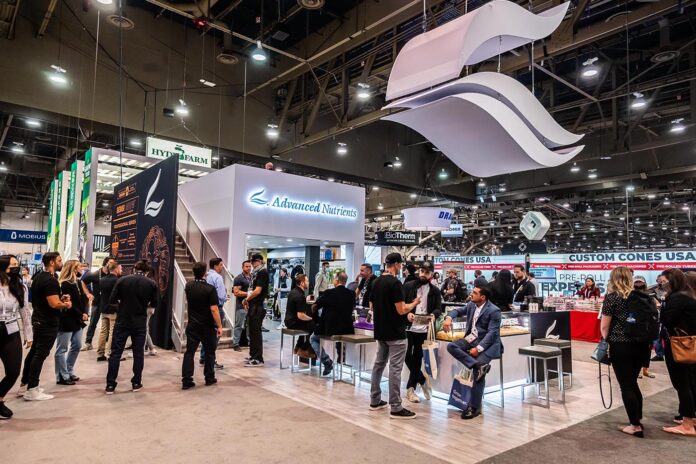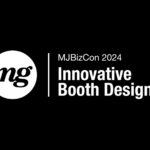After a year-and-a-half break while the world reeled and readjusted to the COVID-19 pandemic, events came roaring back in the second half of 2021. The cannabis industry, buoyed by its designation as “essential,” returned to in-person gatherings with renewed momentum. Revenue is up, stigma is down, and a continuing trend of legislative victories means 145 million Americans now live in a state where cannabis is legal for adult use.
Trade shows, conventions, and expos are where we come together en masse to celebrate, realize, and maximize these gains. A cannabis trade show can play an important role in all industries, but because cannabis is a relatively new sector with considerable unknowns, having designated places to share knowledge, renew and establish connections, showcase products, and develop business opportunities is vital to building a thriving economy.
“As we shape the future of this dynamic industry, it’s imperative that professionals from all aspects of the cannabis ecosystem have the opportunity to connect on a regular basis in an environment that nurtures relationship-building and the exchange of new ideas,” said Aaron Smith, executive director of the National Cannabis Industry Association (NCIA), a trade organization and event series that has been hosting industry gatherings since 2010.
Even in the best of times, trade shows can seem prohibitively expensive and emotionally overwhelming. Exhibiting at a large national or international event can require months of preparation, mountains of money, and a dedicated, battle-tested team that would do the National Football League proud. There are many factors to consider when weighing your company’s potential participation in a business-to-business event, so here’s the lowdown on how to get the most out of the experience without losing your mind—or your shirt—in the process.
PLANNING
Attend or exhibit?
Everyone is eager to get back to the show circuit after an extended period of pandemic lockdowns; fortunately, the calendar now veritably brims with opportunities. Before diving in, though, carefully weigh your needs and objectives as a business or professional before deciding whether to attend, exhibit, or stay home.
Do you own a brand determined to secure shelf space in more stores? Do you sell equipment to growers or processors? Perhaps you’re considering entering the space and want to become familiar with the verticals, trends, and big issues that will shape the industry’s future. Regardless of where you fit on the scale, several events likely will meet your needs.
If you are new to cannabis (e.g., your company is pre-launch or you’re seeking opportunities), attending without exhibiting will allow you to dip your toes in at a modest cost, make connections, and gain a functional understanding of foundational issues.
If your primary goal is to prospect for leads, consider exhibiting. Operating a booth telegraphs your company is confident, eager to do business, and financially solid. Ask yourself how much success you can expect to have without an official presence and how that strategy might make you look to potential customers, particularly if your competitors have invested in floor space.
“I think it’s useless to go to a trade show without a booth,” said Ciencia Labs cofounder and serial entrepreneur Benjamin Mitchell. His company is a startup, but it budgeted for trade-show exhibiting from the beginning. “You end up hopping around from booth to booth talking to sales or marketing people, who are almost never the decision-makers for whatever business arrangement you have in mind. And when you do find prospects, it seems jarring that you didn’t bother with a booth and suggests [to them] potential problems.”
Michael Beaudry Jr., vice president of business development at distributor HERBL, disagrees. Even when his company decides not to take a booth, Beaudry finds advantages to attending major shows—chief among them scouting for new opportunities and emerging companies. “Having the industry under one roof offers an opportunity to observe who is really standing out from the crowd and who is really making an impact on buyers and consumers,” he said.
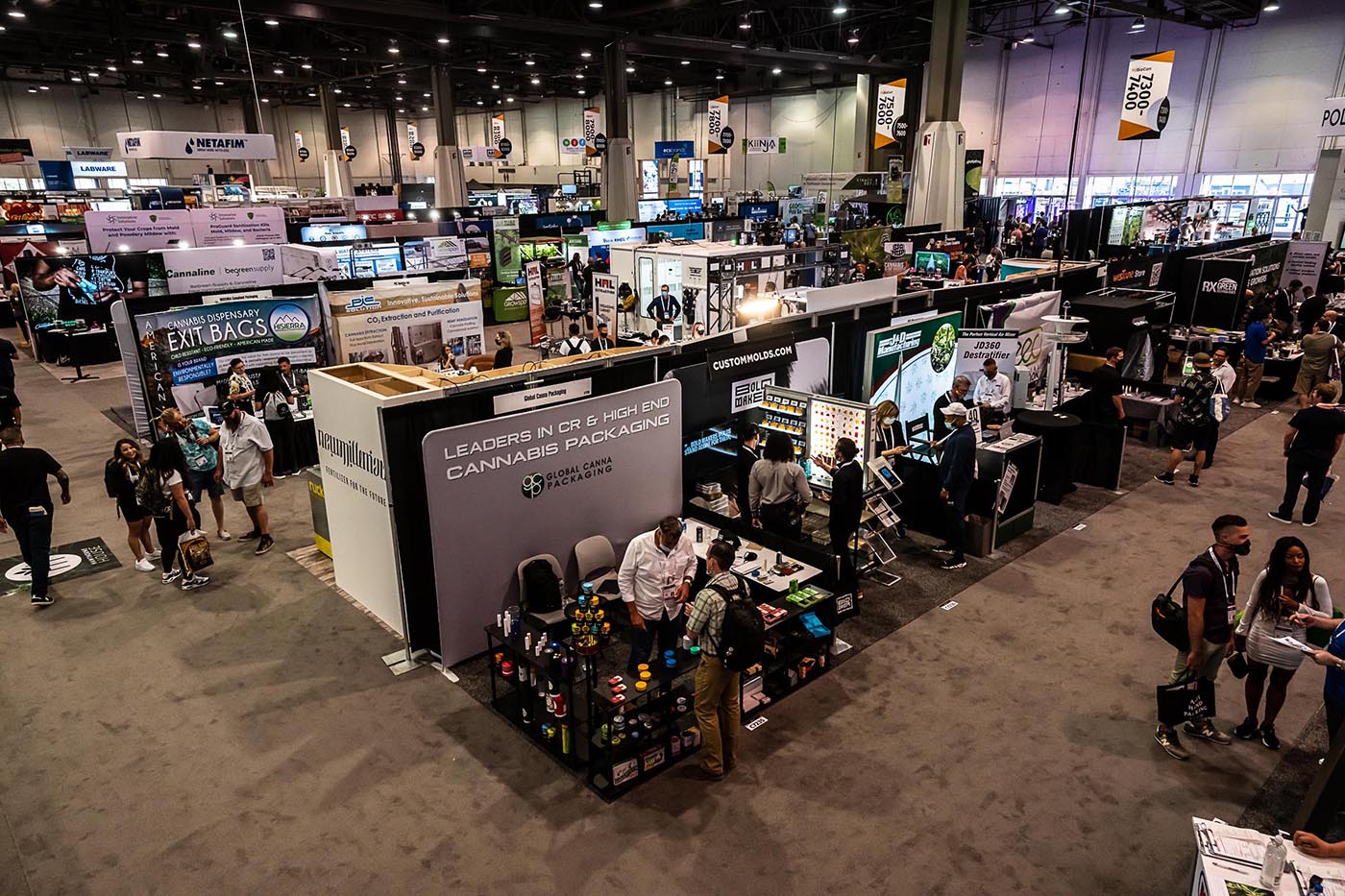
Which shows are best?
As a general rule of thumb, plant-touching businesses have local markets. Even if they operate in multiple states, each state functions as a world unto itself. Non-plant-touching, or ancillary, businesses operate in a nationwide environment. Geographic limitations, scaling aspirations, and budget all are important considerations when evaluating shows.
For example, if your primary aim is to secure dispensary shelf space in California for edibles, flower, or extracts—none of which can be sold across state lines—NCIA and Hall of Flowers produce expos specifically tailored to the California market. Hall of Flowers focuses on forging connections between retail buyers and brands, so it’s particularly popular with those two contingents.
NECANN produces events in seven states. For founder Marc Shepard, there is also an ideological component to attending local events: He believes shows devoted to specific states or regions support small businesses, allowing them to compete with much larger companies. “We want to help create a world where local communities benefit financially from the emergence of cannabis legalization in their state,” he said. “For a small startup with finite resources, the cost of exhibiting at a national convention can be literally a make-or-break scenario. And once they are there, it can be very difficult to meet the right people and make an impression surrounded by larger, more well-established competitors.”
For ancillary businesses, national expos like MJBizCon provide a platform to gather leads from diverse regions. Bear in mind, though, even plant-touching enterprises may benefit from national and regional gatherings if they seek licensing deals as a way to expand their market.
When it comes to deciding which shows to participate in—be they local, regional, or national—Illinois-based multistate operator (MSO) Cresco is particularly drawn to events that support wholesale growth. “We seek out trade shows that are committed to producing compliant events that bring sellers and buyers together,” explained Director of Field Marketing Andy Dunham. “The shows that offer consumption and product sample sales are unmatched opportunities for our account managers and wholesale reps. Having the ability to trial products directly to prospective clients has proven most successful for achieving our goals.
“We explore and vet opportunities for each region well in advance of the trade show and base our objectives and goals around solving the issues at hand in each region,” he added.
Pro tip: Research the show.
According to the Center for Exhibition Industry Research, 64 percent of businesses say the quality of attendees is the determiner when deciding whether to exhibit, and 84 percent say they’ve expanded their presence when top-quality attendees are expected. Examine the previous year’s exhibitors, panelists, and sponsors. Observe testimonials on social media and read independent media reports and blogs. Most importantly, ask people who have attended before whether they plan to attend again and why.
EXECUTION
A successful show experience—especially if it involves exhibiting and managing a team—requires significant planning and disciplined execution. Events are never perfectly executed, but problems rarely arise that couldn’t have been solved with better planning, risk assessment, or just plain old common sense.
In the planning stages, teams should consider staffing, travel, and accommodations; marketing and sales materials; arranging meetings in advance; and, if exhibiting, booth design, fabrication, build, transportation, set-up, and breakdown.
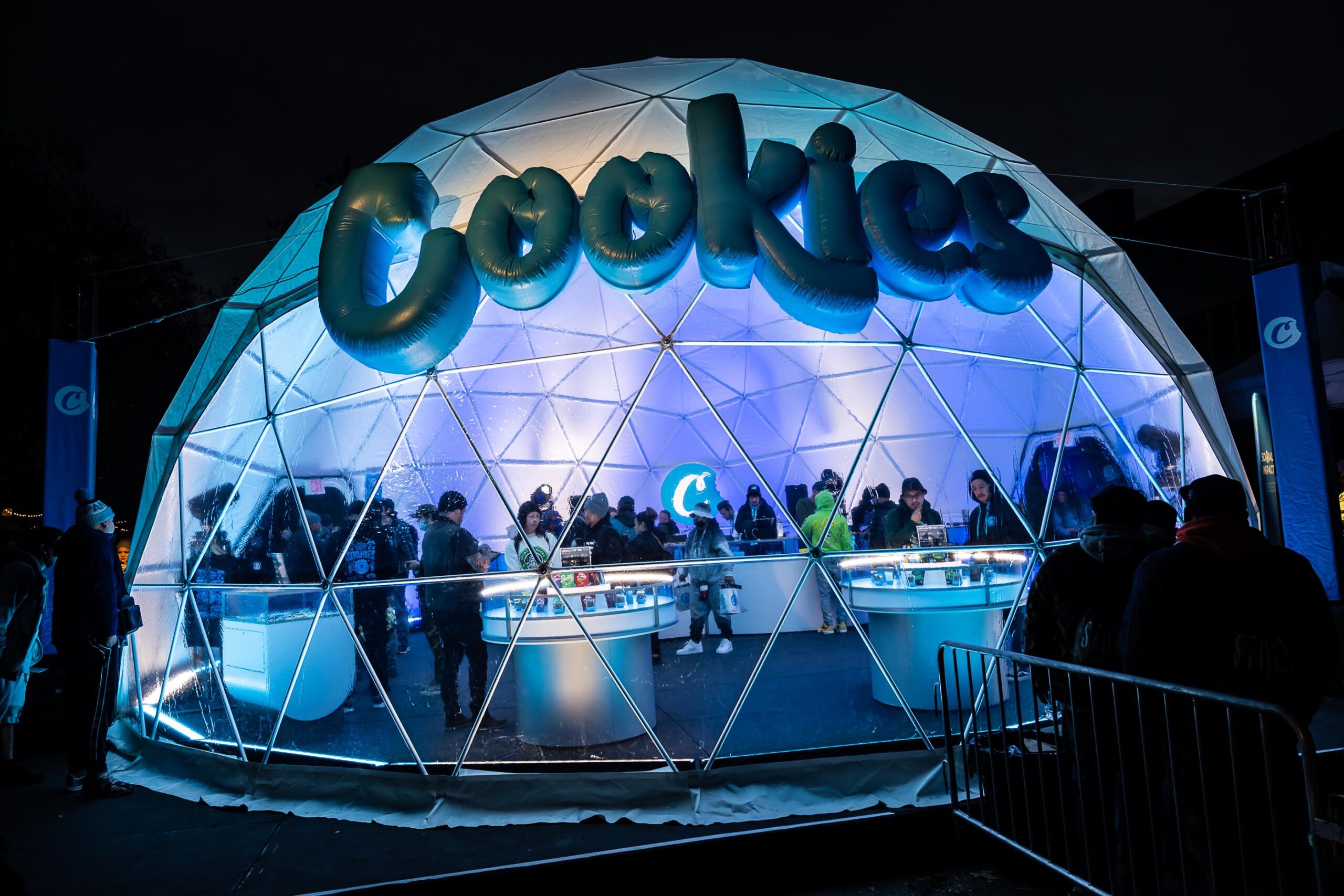
Budget
Participating in a trade show as an exhibitor is not cheap. From the booth and swag to travel and staff, expenses are numerous and some might not be obvious.
According to Nimlok, a veteran trade-show-services company based in Chicago, the total cost to exhibit averages about three times the booth space fee. The budget for a successful show ought to look something like this (percentage of total expense):
- Exhibiting space: 30 percent.
- Exhibit services and logistics: 20 percent.
- Staffing and travel: 20 percent.
- Booth design: 10 percent.
- Shipping and drayage: 10 percent.
- Swag and promotional material: 5 percent.
- Miscellaneous costs: 5 percent.
If the event typically results in a crystal-clear return on investment (ROI)—direct sales, qualified leads, etc.—consider how many closed deals would be required to cover the cost of exhibiting. If the number is beyond reasonable expectations, find a way to reduce costs or consider forgoing the booth and hosting a party or sponsoring an activation instead.
Something else to keep in mind while evaluating ROI: brand awareness. It’s a vague concept, and the value is extremely difficult to quantify. What’s more, brand awareness falls squarely in the realm of Catch-22: Startups often have the smallest budgets but the greatest need to establish their presence, while older companies have larger budgets but their names and reputations already are established.
If brand awareness is among your primary goals, realize first impressions count. A lackluster presence on the show floor could do lasting damage to your image. You don’t have to put your company in hock to make a trade show, convention, or expo worthwhile, but remember that although image may not be everything, the image you project is what potential customers and business partners will remember long after the event is over. Another thing to bear in mind: Benefits of exhibiting may not become apparent after just one show. As with advertising, the more times potential customers and business partners see your message, the more memorable it becomes. Budget accordingly.
Timelines
Timelines depend on the company, the show, and the scope of participation. Regardless of the parameters, though, allow more time than you think you’ll need to put everything together. Rushed efforts often lead to subpar experiences.
“Timelines and phases vary depending on the type of work,” said Maxxie Goldstein, vice president at A.P. Keaton, a New York-based agency specializing in trade, experiential, and content marketing. “We have clients who work with us for eight months on experiential and trade-show activations, and we have clients who work with us for two years on everything from brand strategy and identity to digital marketing, demos, and samplings. It varies.”
Goldstein said A.P. Keaton often is approached by brands three to four weeks before an event after realizing they were very wrong when they thought they could pull off everything themselves. “There are so many factors to consider beyond the booth, and when you add in logistics, load-in, strike, shipping, and storage, they get overwhelmed,” she said. If your company doesn’t have an experienced in-house team devoted to nothing but trade-show planning and logistics, “you may need a partner who has done this before and who has thought about the entire experience,” she added.
New York-based MSO Columbia Care showcased its newly completed brand portfolio in a massive display at a mid-sized single-state show in December. Led by Vice President of Marketing Operations Laura DuBey, the company spent ten weeks preparing for the show and solicited the help of Ohio-based merchandising partner ZenGenius to produce the layout.
“We wanted to create an experience that was in line with our new retail brand, Cannabist, which is welcoming to walk through, has high-quality products, and is supported by our knowledgeable and trustworthy staff,” said DuBey, a ten-year veteran of event production. Creating an on-brand presence that successfully reproduced the retail chain’s vibe took the show team’s undivided attention and would have been much more difficult without outside help, she said.
Selena Hoover, senior account director at experiential marketing agency TriggerHouse, recommends preparing trade-show appearances as far in advance as possible. “This could be as simple as evaluating the show landscape and deciding where to spend your time and money over the calendar year,” she said.
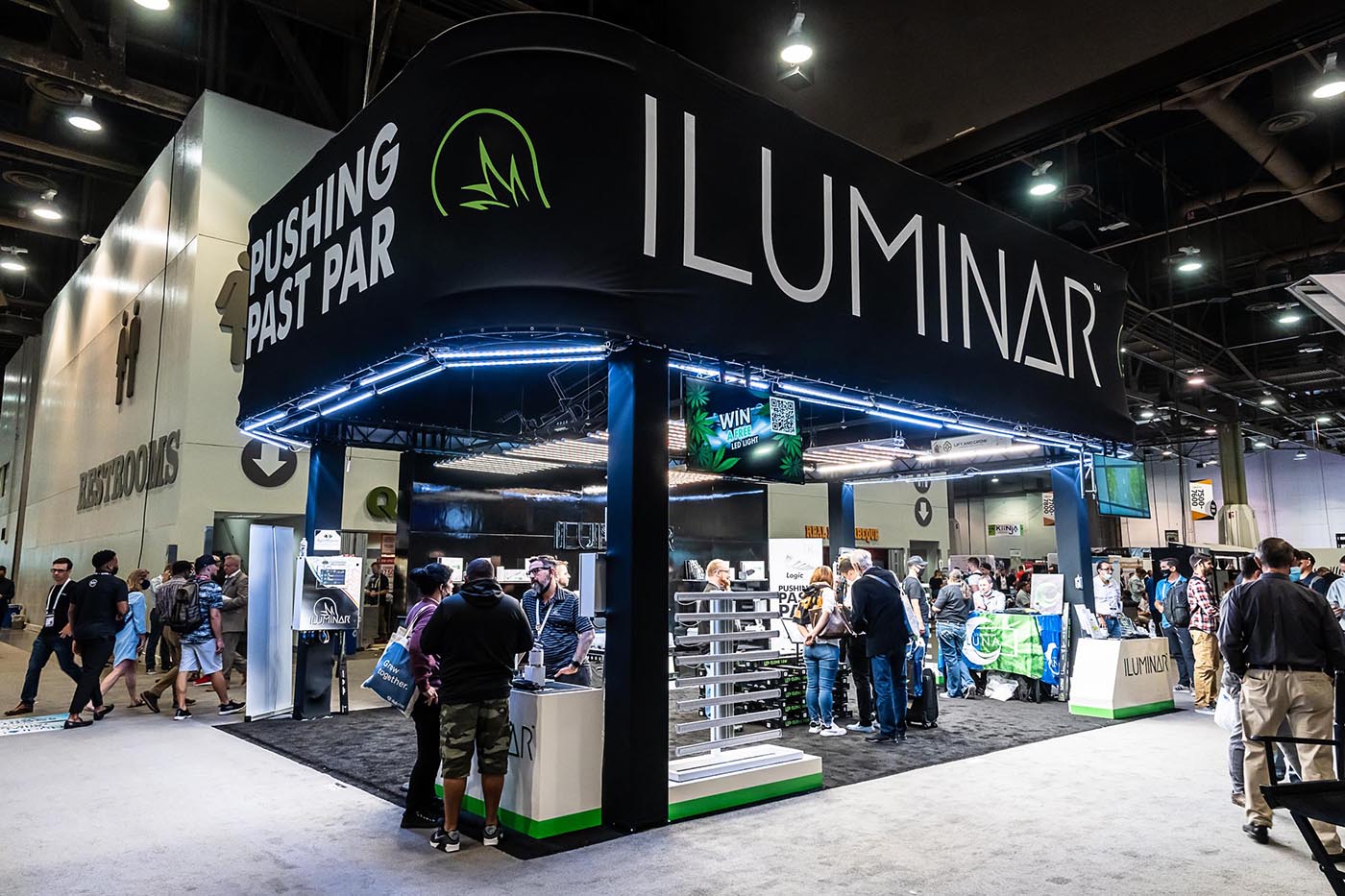
Booths
Design and technology standards for trade-show booths have changed dramatically over the past five years. As shows return, expect to see new looks from brands that used pandemic downtime to reinvigorate their exhibit. If the same is on your agenda, having an experienced event manager on your team can be beneficial.
“If you’re going to invest the money in a trade show, you should do it right,” said Goldstein. “Skimping never works. Agencies that do this dozens of times a year have a huge leg up.”
According to Hoover, “Executing trade shows can be logistically taxing. Delegating these tasks to an experienced team allows your brand and marketing team to focus on other critical business objectives.” She recommends brands that want to elevate their trade-show presence define concise, tangible goals. “This allows the team to build an experience tailored to meet your desired ROI,” she said.
DuBey said developing a well-defined creative vision and using that as a “north star” to guide development efforts and vendor selection is imperative. Columbia Care’s booth, she explained, can be adapted to any event, large or small, in which the company participates. “We set out to create a booth that was modular, had vignette tables for each brand, and could scale up or down depending on the booth size and [show floor] layout,” she said. “We knew we wanted the flexibility to be strategic about which brands we included in future shows, and the table-per-brand approach also helped ensure there was something for everyone.”
Recruiter Vangst took a different path. The company takes a large traditional booth out of storage for major trade shows but employs a separate conversation-focused space labeled “Proud to Work in Cannabis” for less formal or smaller events. Bright, airy, and outfitted with attention-getting neon signage, the downsized design forgoes the larger booth’s obvious branding components. “With events coming back this year, we wanted to take full advantage of being in person with our community, and part of that was creating a space and concept everyone felt a connection to,” said Kelsea Appelbaum, head of community partnerships. “It’s not always about pushing a logo and marketing materials in someone’s face. Sometimes it’s better to give people a reason to be inquisitive and then take it from there.”
She added all trade shows ultimately should be approached as unique events with their own unique audience. By adopting a tailored approach to each show, organizations can build a broader network, continue to intrigue attendees, and remain relevant as the industry grows.
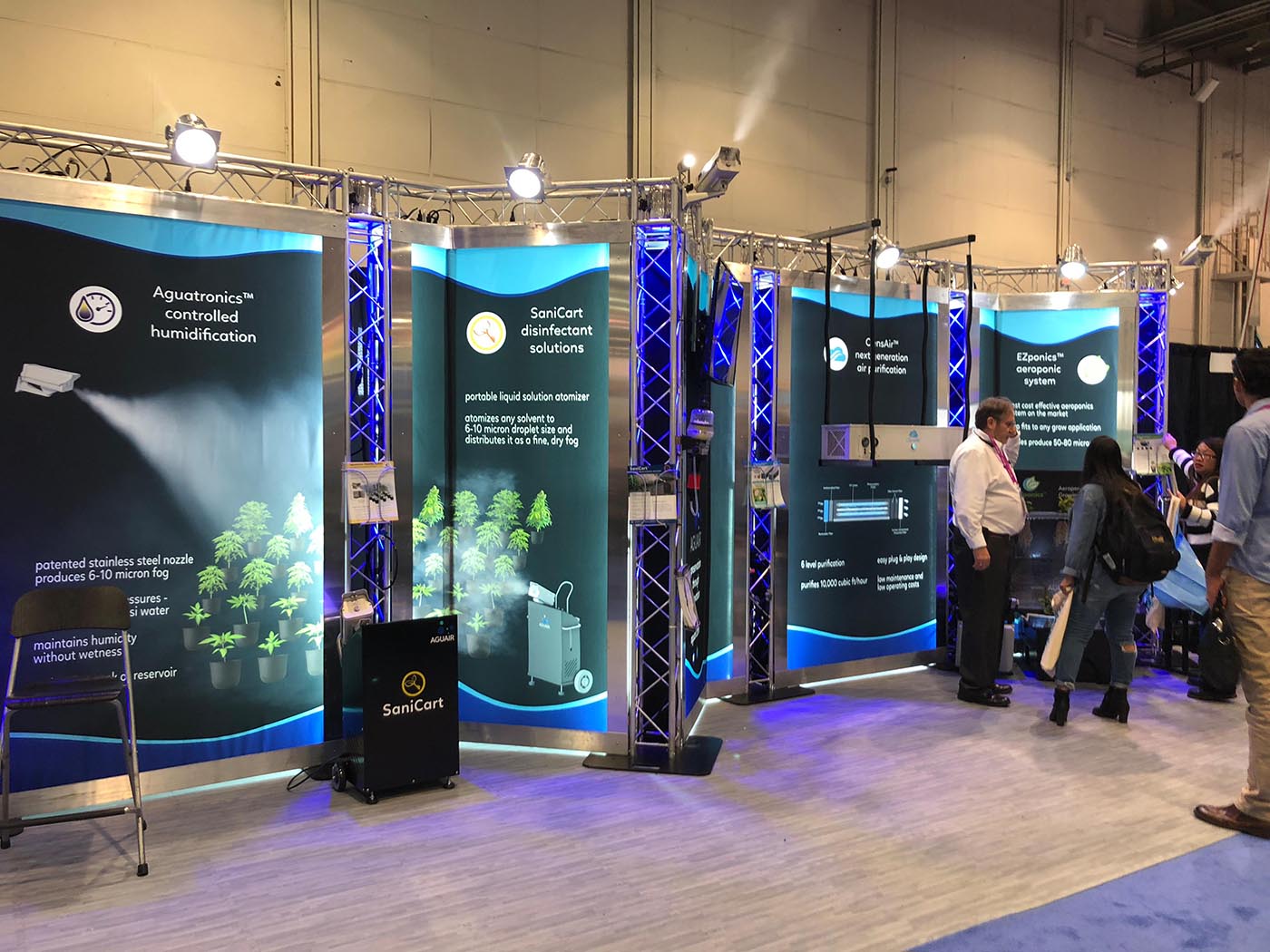
Marketing and sales materials
While there is limited opportunity to engage with prospective customers on the show floor, providing useful takeaways in the form of leaflets, flyers, catalogs, or product samples—and, of course, branded swag—will keep your company in leads’ minds long after the show ends.
Ciencia Labs brands dreamt and LUCHADOR use a simple combination of four-by-six flyers, catalogs with wholesale pricing, and product samples, along with utilitarian, brand-specific swag that does more than just fill a free tote.
“For our sleep-focused brand dreamt, we have had a lot of success with the beautiful silk eye masks we hand out liberally at trade shows,” said Mitchell, noting the combination of uniqueness and utility makes the masks a particularly welcome handout. “We hear from people all the time that they still sleep every night wearing the eye mask we gave them two years ago.”
Sana Packaging prints its sale sheets on hemp paper and its business cards on cannabis-friendly crutch cards, which can be torn and rolled into a filter. As a sustainable-packaging company, Sana’s team is acutely conscious of producing excess and is meticulous about ensuring they print only what they need for a specific show. “We estimate how many sales sheets we’ll need at a conference and only print more in case those run out,” said cofounder and Chief Strategy Officer James Eichner. “We also use a shorter version of our sales sheet instead of the longer one available digitally.”
As part of its “Proud to Work in Cannabis” campaign, Vangst took more than 450 funky, tie-dyed T-shirts emblazoned with the optimistic statement to Hall of Flowers in September 2021. “We were completely out of shirts within an hour and a half,” Appelbaum said. “They were really, really well-received and are living on beyond the event. Every week, I have people tag me [on social media] in photos of them wearing the shirt. It seems like ‘Proud to Work in Cannabis’ resonates with all of us.”
Pro Tip: Create less trash.
Trade shows already have gigantic carbon footprints without exhibitors generating an abundance of branded swag that inevitably will end up in a waste bin. Make collateral for a purpose, not a landfill.
Team and roles
Picking the right team to represent the company is one of the most important—and sometimes least considered—show-related decisions. Get it right, and you’ll generate bountiful qualified leads, increase your company’s visibility, and have a great time at the event.
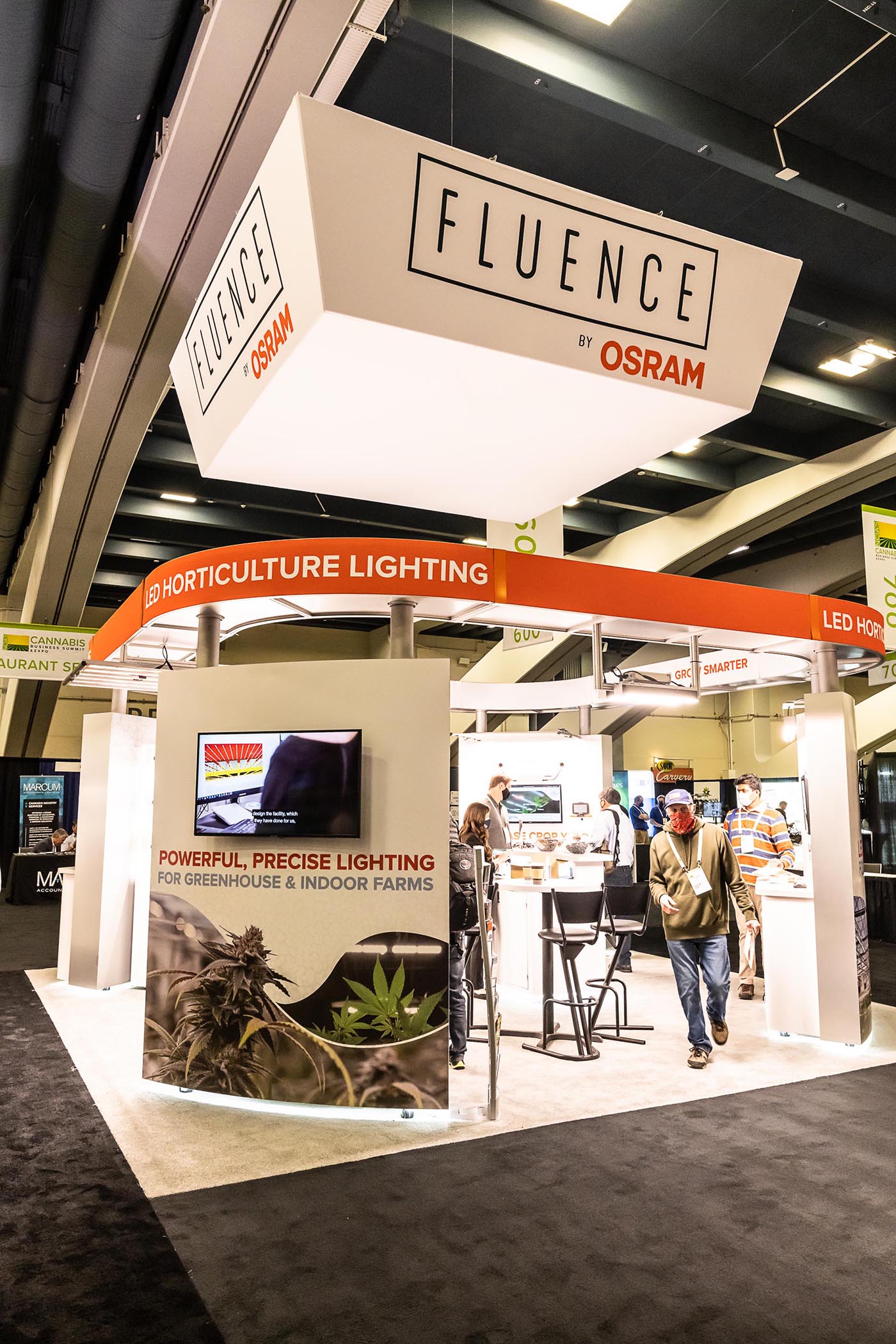
For Vangst, staffing is guided by the type of attendees Appelbaum anticipates based on previous outings at the same venue. “If we know there are going to be a lot of individuals looking for jobs, we’ll send more recruiters,” she said. “If it’s a lot more B2B-focused, we’re probably going to send more people from our sales team.”
Appelbaum said company founder and Chief Executive Officer Karson Humiston is frequently one of the team members, and her commitment to going from booth to booth to introduce herself is one of the company’s best assets.
“Our CEO is never above coming to trade shows and working alongside the team,” Appelbaum said. “You can’t be an executive sitting behind a desk in an industry that moves this quickly. You have to actually be present.”
Ciencia Labs’s Mitchell believes there is an almost mythical power derived from having top executives in the booth when possible. As a founder, sales lead, and his company’s official “closer,” Mitchell’s presence is central to Ciencia’s success at buyer-focused trade shows. He added it carries weight that can’t be matched, even by the most aggressive salesperson.
“I’m surprised a lot of companies don’t have their founders attend trade shows and spend time in the trenches,” said Mitchell, who prior to co-founding Ciencia was the head of sales for a software-as-a-service startup that exhibited at more than twenty trade shows per year. “No one is ever going to push your products as hard as the people at the top.”
Chad Bronstein, founder and CEO at marketing and compliance technology company Fyllo, is a believer in that philosophy, too. Bronstein’s team attends myriad cannabis and non-cannabis trade shows annually, and Bronstein typically attends to move potential deals forward. “Trade shows are an extremely important part of our business,” said.
Pro tip: Founder power.
No one sells more aggressively than a company’s founder or upper-level executives. When the big guns mix with potential customers, companies get better results and are more in touch with the industry.
For members of the sales team, a clear game plan for making the event as successful as possible is imperative. One of the most important considerations is separating potential customers from the curious. Establish a lead-qualifying routine prior to setting foot on the show floor, and use it on everyone who approaches the booth.
“A lot of people walking the floor are there to sell to exhibitors,” said NECANN’s Shepard. “Asking someone to identify their reason for talking to you and politely telling them you don’t have time for their sales pitch is not just acceptable—it’s necessary.”
Mitchell agrees having some kind of system for qualifying interested leads is vital for a successful show experience. “It’s very important to develop a process for booth interactions,” he said. “If you’re using your booth for sales and not just marketing, then you need to treat it like any other element of sales, and this means using a repeatable process.”
Educational components
If you and your business are in full sales mode for the duration of the conference, peeling away from the booth or important meetings to attend educational sessions can feel like a big ask. But regardless of your experience level, there’s always more to learn, particularly in an industry changing at such a dramatic pace.
Given its position as a leading business advocacy group, NCIA considers panel discussions, keynote addresses, and seminars a cornerstone of its events. “One of the biggest ways we impact the future of the industry is by inviting panelists to discourse on key topics in an environment of open, honest communication,” said Smith. Keynotes at NCIA events have been delivered by San Francisco Mayor London Breed, The Parent Company CEO Troy Datcher, and former Mexican President Vicente Fox, among others.

Networking and parties
It’s an old cliché that deals don’t get made during the day in the exhibit hall, but at night over drinks. Trade shows usually incorporate networking events, mixers, and afterparties to keep energy high and add value to what little downtime exists. Some are intimate affairs with cocktails and appetizers, some involve catered meals, and a few are full-blown celebrations complete with live music or a DJ and a dance floor.
The most eagerly anticipated require invitations. According to Kenneth Loo, cofounder and CEO of bicoastal public relations firm Chapter 2, the best way to secure a coveted invite is to build relationships before, during, and after the event. “Share your journey openly, and always be a source of support to those you meet,” he said. “Do this, and those invites and velvet ropes will open.”
Beyond mere entertainment, after-hours events can be an excellent way to raise a company’s visibility and lure leads farther down the sales funnel, according to Farechild Events cofounder and CEO James Zachodni. Farechild produces flashy, high-energy afterparties hosted by some of the most well-known brands in the industry. “Our sponsors want to continue the business of the day by hosting potential clients in an atmosphere where they can show them some hospitality and break bread,” Zachodni said. “Most of our sponsors have told us they do more business sponsoring an afterparty than they do setting up a booth for two days.”
Trade shows are an essential aspect of business-to-business commerce, and most companies should plan to participate in at least a few each year. Finding the best fits requires clearly outlining your goals and carefully examining the events that may be best-positioned to help you meet them. The 2022 calendar is full of trade shows, expos, and conventions of all sizes in the Americas, Canada, and Europe, with narrow or wide focuses appropriate for every sector: brands, buyers, cultivators, manufacturers, investors, advocates, and beyond. Choosing the right events and executing with discipline could make a pivotal difference for your business in the coming years.
“There’s nothing like getting together in person to discuss business, and trade shows are excellent for giving national industries central meeting points,” Bronstein said. “While attendance is down from pre-pandemic levels, we certainly feel these events are still very important for our business.”
“And don’t forget to have fun!” Columbia Care’s Dubey said. “This line of work usually comes with a tangible end product you can share and be proud of.”







